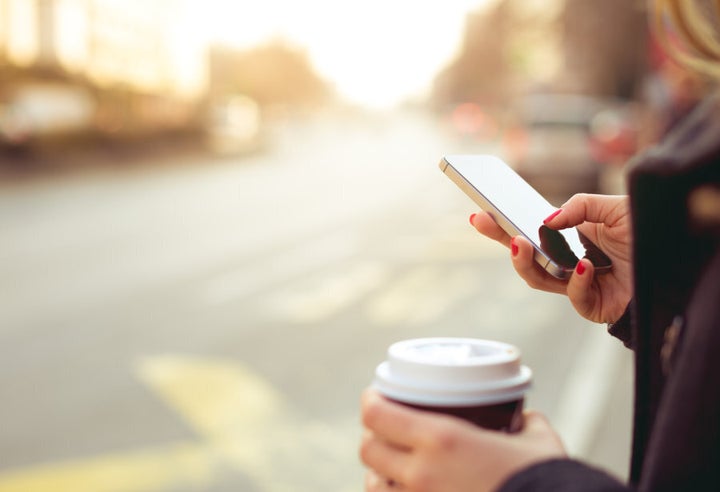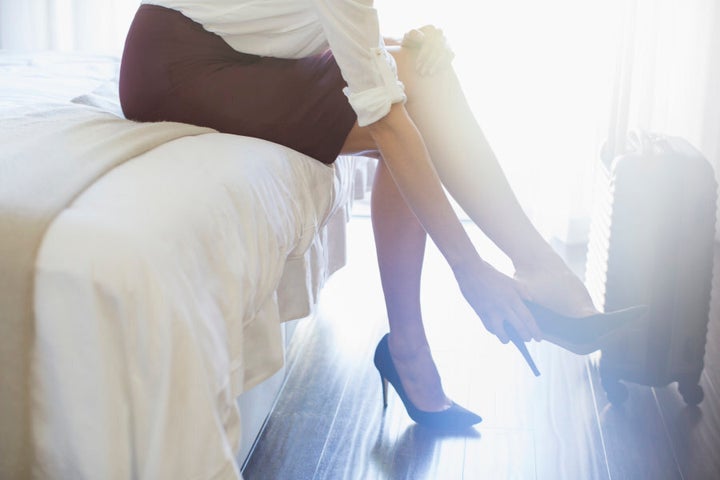By now, you have probably settled back into your work routine for the year.
What you may not have considered off the cuff is how much said routine is costing you.
According to a new report from ING Direct, Aussies are forking out an average of $591 each month on going to work. That's over $7,000 each year.
"It is so important to make sure that Aussies are aware of their spending and where it is coming from," John Arnott, Executive Director of Customers at ING Direct, told The Huffington Post Australia.
"We are a nation of hard workers but the expenses that come with going to work can add up ... a lot of the time we simply don't consider the impact these expenses can have on our bank balance month to month."
The report, conducted by Galaxy Research, polled over 1,000 workers on work-related expenses including transport, lunch, childcare, clothes, grooming and those all important barista brews.
An average month in the life of an Aussie worker:
Travel: $179
Clothes: $37
Coffee (and energy drinks): $74
Lunch: $129
Childcare: $123
Looking the part: $34
Car parking: $16
Individual spends were converted to a national estimated spend of $39 billion in one year.
Millennials are forking out more.
It must be all of that smashed avo on rye that we're munching on for breakfast.
The study estimates Gen Y workers spend an average of $794 a month -- or $9528 per year. That's compared to $624 for Gen X'ers and $320 for Baby Boomers.
"Whilst millennials are good savers and budget setters, they are very much about living in the now. They're more conscious of their brands, they're more socially connected and less willing to compromise on some of the luxuries," Arnott said.
Millennials fork out $92 each month on their coffee and energy drink fix -- twice more than older employees -- and $184 on lunches.

For those Gen Y'ers who are returning to work after having kids, daycare costs can kick in and rack up quickly to $208 each month.
Travel is still our biggest expense.
Across the country, travel is costing us an average of $179 each month. This was followed by $129 on lunch, $123 on childcare, $74 on coffee and $37 on clothes.
"This was an area that was quite surprising. There is a general assumption that we're all on public tranport, but there are a lot more people who are using private transport, who are parking in the city and who are taking the odd luxury of a cab or an Uber home," Arnott said.
Victorians spend more.
Monthly costs are highest for Victorians who are forking out $663 per month -- $72 higher than the national average.
This seems to be put down to higher expenditure costs in childcare and car parking.
What can we do about it?
Aside from, well, not going? And having a reasonably bearable day in the office that still kicks off with your morning coffee?
According to Arnott, striking a balance between saving and spending is key.
You don't always need to compromise.
"These findings weren't surprising -- they are indicative of how we work in the city in our current climate," Arnott said.
"What is important is to be aware of your spending, and to be comfortable with that. Set yourself a budget, use as many tools as you can and try to stay on top of your finances.
"You don't always need to compromise."
Feeling like your budget is slipping? Here a few ideas to curb those costs.
Let's talk about coffee.
First things first, a coffee every day isn't a bad thing.
But you may want to think twice about continuing to go to your favourite place near work that has suddenly jerked up their prices by 30 cents.
Arnott recommends looking for ways to get the same value for a better price. Is there another shop down the road that sells your soy cap for cheaper? And do you really need that large cup?
"Limit yourself to one a day, and then switch onto the granulated stuff," Arnott said.
"By looking at the alternatives, you could be making significant cost savings over the long run."
Packed lunches are so hot right now.
In an ideal world, our favourite lunch from the healthy cafe down the road would be free, all day, every day. But they're not.
"Mix up going out for a sandwich with bringing in some leftovers," Arnott said.
"By planning ahead and setting some time aside at the start of the week to make packed lunches ... you could save a yearly average cost of $1548 for buying lunch out."
Try these to kick-start your new lunch prepping routine (they don't even take long, we promise).

Public transport can curb costs.
Drive to work? You'll be well aware of those hidden costs that leave transport as our highest work-related expense.
Arnott recommends switching to the train -- or taking advantage of those light mornings and running to work.
"If you're taking the odd Uber home, keep track. These can quickly add up."
With a little bit of squirreling, you could be looking at your next holiday.
ALSO ON HUFFPOST AUSTRALIA